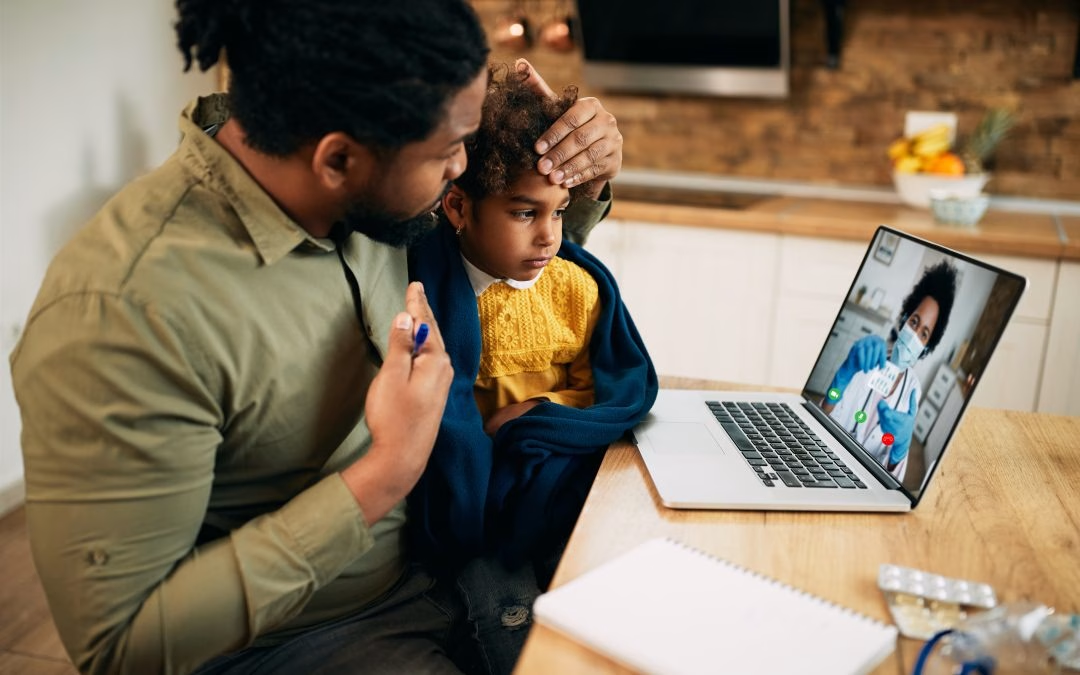by | May 13, 2024 | Healthy Living

Why is My Sunburn Causing a Rash?
When the sun’s out, it can be tempting for us to soak up the warm rays outdoors near bodies of water or at local parks. In the midst of an outdoor adventure, it is a breeze to overlook sun exposure’s hidden risks, especially on cloudy days. Sometimes a simple sunburn can be something worse: sun poisoning. Knowing the signs and dangers of sun poisoning is key to keeping our skin happy and our bodies in top shape.
What is Sun Poisoning?
Sun poisoning, also known as a type of sun allergy, happens when your immune system gets confused and thinks your sun-damaged skin is an enemy invader, kicking off a defensive reaction. One typical form is Polymorphous Light Eruption (PMLE), which shows up as itchy, blistering rashes, sometimes popping up hours or days after you’ve been in the sun. PMLE is relatively common, but its impact can range from a bit of annoyance to serious discomfort, especially if you’re out in the sun again before your previous rash has fully healed. This re-exposure can cause blisters and rashes to reappear.
Is Sun Poisoning Serious?
It is critical to tell the difference between a regular sunburn and sun poisoning. While sunburns usually fade away in a few days, sun poisoning comes with its own set of signs, like blistering, skin peeling, and symptoms like feeling sick and dehydrated. Severe cases may require immediate medical attention, as complications like infection or dehydration can worsen the condition.
How Can I Avoid Sun Poisoning?
Keeping sun poisoning at bay starts with smart habits. Be careful when the sun is at its strongest, typically between the hours of 10 am and 4 pm. This is especially important for kids, who need extra attention when it comes to the sun. Keep them cool, hydrated, and in the shade, especially if they’re under six months old. If they’re over six months, make sure to cover any exposed skin with broad-spectrum sunscreen. A lot of the skin damage that leads to skin cancer happens when we’re young, so stay on top of protecting you and your children from harmful rays.
Here are some quick tips to steer clear of sun poisoning:
⦁ Skip the tanning beds — tanned skin is not less susceptible to sunburn.
⦁ Avoid sunscreen that is more than three years old
⦁ Use water-resistant, broad-spectrum lip balm and sunscreen with SPF 30 or higher.
⦁ Clouds won’t save you from getting burnt, so use sunscreen even on overcast days.
⦁ Apply sunscreen 30 minutes before stepping outside.
⦁ Keep reapplying every two hours, or more often if you’re swimming or sweating.
⦁ Use titanium oxide and zinc oxide after sunscreen or lotion.
⦁ Bug spray should always be the very last thing you put on.
⦁ Double-check if any meds you’re taking make you extra sensitive to the sun.
⦁ Sunglasses aren’t just a fashion statement—they shield your eyes from UV light, so grab ones with a UV rating label and a wrap-around style for extra protection.
⦁ If you’re using cosmetics with alpha hydroxy acid, be aware—they can increase your skin’s sun sensitivity.
⦁ If you’re serious about sun defense, consider investing in clothes with a high ultraviolet protection factor (UPF).
When Should I Seek Medical Attention?
It is vital to monitor your symptoms and skin health when deciding whether professional medical care is needed. Symptoms such as large blisters, severe swelling, or worsening pain can be signs of potential complications requiring quick evaluation.
Seek immediate medical care if you experience the following:
⦁ Dehydration
⦁ Fevers over 103 F (39.4 C)
⦁ Vomiting
⦁ Skin infections
⦁ Cold skin, dizziness, or faintness
⦁ Confusion
Basking in the sun’s warmth can offer benefits like improved mood and vitamin D, but it’s important to be aware of the hazards. Sun poisoning, though preventable, requires prompt attention. If you are concerned that you or a loved one has sun poisoning, stop by AFC Hixson today, where we can provide prompt, compassionate care and work to restore your skin’s health.


